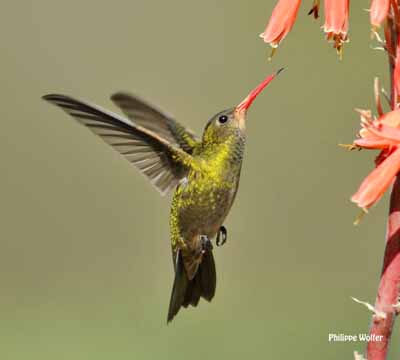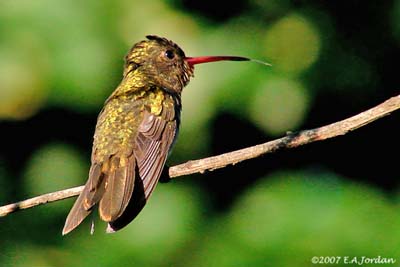
Gilded Sapphire
Hylocharis chrysura
Apodiforme Order – Trochilidae Family
BIOMETRICS:
Length: 8-10 cm
Weight: 4-4,5 g
DESCRIPTION:
Gilded Sapphire is a common species in its range.
Adult has iridescent golden green upperparts and underparts, except the white thighs and the pale rufous chin. On the wings, the flight feathers are olive-brown. On the tail, the rectrices are glittering golden bronze.
PROTECTION / THREATS / STATUS:
Gilded sapphire is very common in its habitat, and benefits from gardens and plantations.
This species is not threatened at this moment, and range expansion can be expected.
Fr : Saphir à queue d’or
All : Goldsaphirkolibri
Esp : Zafiro Bronceado
Ital: Colibrì dorato
Nd: Gouden Saffierkolibrie
Port: Beija-flor-dourado
Photographers :
Eduardo Andrés Jordan
MIS AVES – AVES DE ARGENTINA
Philippe Wolfer
OISEAUX D’ARGENTINE
Text by Nicole Bouglouan
Sources :
HANDBOOK OF THE BIRDS OF THE WORLD Vol 5 by Josep del Hoyo-Andrew Elliott-Jordi Sargatal - Lynx Edicions - ISBN: 8487334253
Wikipedia (Wikipedia, The Free Encyclopedia)

The head is golden green too, with white spot behind the eye. The long bill is red and black-tipped. Eyes are brown. Legs and feet are black.
Both sexes are similar, but female is duller with greenish vent.
Immature resembles female, with edged buff head feathers.
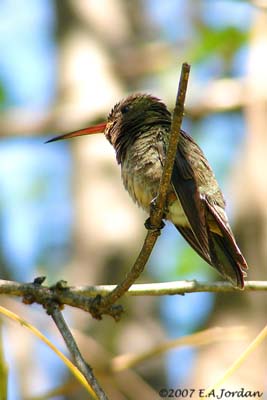
VOICE: SOUNDS BY XENO-CANTO Gilded Sapphire, as other hummingbirds, is often heard before to be seen!
It utters high-pitched chirps and whistles, often unmelodious. During the defence of the feeding territory, calls often are aggressive, given in series of loud chattering.
Alarm calls are uttered at high frequency. They are very shrill and given when predators are approaching. These calls often accompany aerial attacks.
HABITAT:
Gilded Sapphire frequents gardens and plantations, but also savannahs with some trees and bushes. It may be seen at forest edges and from 200 to 1000 metres of elevation, sometimes locally higher.
RANGE:
Gilded Sapphire has wide range in South America, living in southern Brazil, Bolivia, Paraguay, Uruguay and northern Argentina.
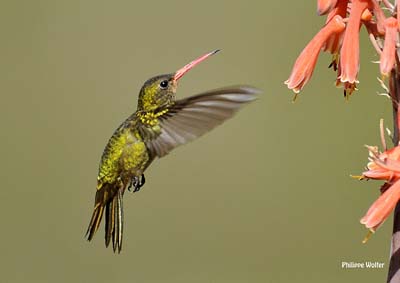
BEHAVIOUR:
Gilded Sapphire feeds on nectar from native flowering plants and introduced angiosperms. It also catches insects in the air by hawking, or from the outer vegetation, and takes small spiders from their webs.
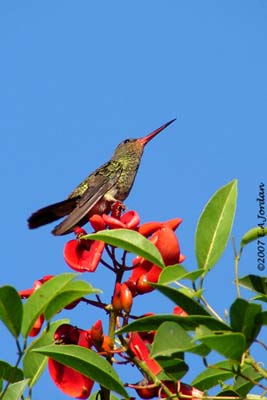
This hummingbird forages in clearings on the outer parts of the vegetation, from low to tree tops. They often are more numerous between 400 and 800 metres of elevation.
Hummingbirds need energy and the Arthropods are their main protein supplement. They also take pollen gathered when feeding on nectar.
During the night, they save the energy by entering hypothermic torpor which is very similar to hibernation in other species.
At the beginning of the breeding season, the male sings and performs displays in order to expose the iridescent plumage. It also performs some aerial displays.
Courtship displays are often similar to defence displays.
Gilded Sapphire is sedentary in its range. Some Brazilian populations may migrate in July-August. Some dispersion is observed according to the flowering trees.
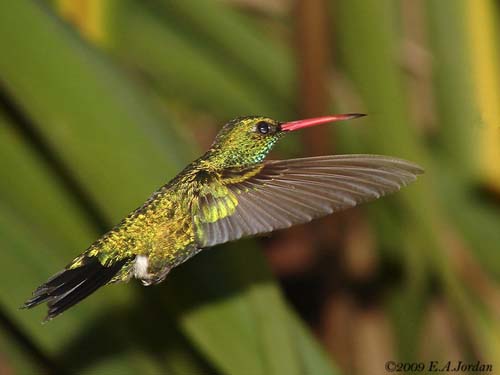
FLIGHT:
Gilded Sapphire has an agile flight. When feeding at flowers, it performs backwards and forwards hovering.
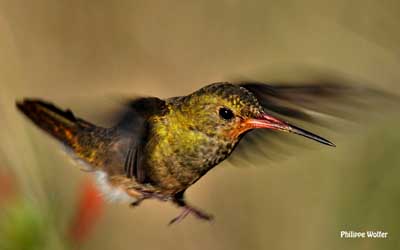
REPRODUCTION:
Breeding season varies according to the range.
Gilded Sapphire builds a small open, cup-shaped nest with cobwebs and seed fibres from bromeliads and other plants.
Lichens and pieces of leaf decorate the exterior of the cup.
The nest is situated on thin horizontal branch, at about 4-6 metres above the ground, sometimes up to 12 metres.
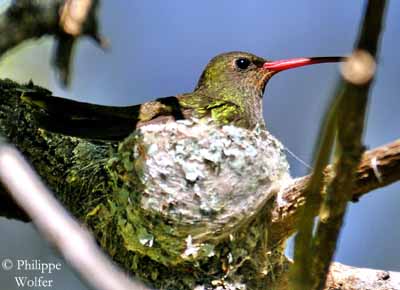
Female lays two eggs, and incubates them during about two weeks. The downy chicks are blackish, with buffy down on the back. They fledge 20-26 days after hatching.
They reach the sexual maturity at two years.
DIET:
Gilded Sapphire feeds mainly on nectar and pollen from flowers. It also hawks insects in flight or from the outer vegetation.
